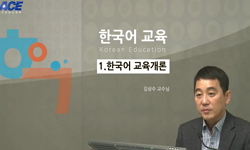본 연구는 한국어 형용사 '아름답다’와 *‘예쁘다’의 일본어 대응 표현을 평행 말뭉치 분석을 통해 고찰하였다. 이 두 형용사는 한국어 의사소통에서 자주 사용되지만, 미묘한 의미 차이...
http://chineseinput.net/에서 pinyin(병음)방식으로 중국어를 변환할 수 있습니다.
변환된 중국어를 복사하여 사용하시면 됩니다.
- 中文 을 입력하시려면 zhongwen을 입력하시고 space를누르시면됩니다.
- 北京 을 입력하시려면 beijing을 입력하시고 space를 누르시면 됩니다.

한국어교육을 위한 병렬 말뭉치 활용 ‘아름답다’, ‘예쁘다’의 일본어 대응 양상 연구 = A Study on the Japanese Correspondence Patterns of ‘아름답다’ and ‘예쁘다’ Using a Parallel Corpus for Korean Language Education
한글로보기https://www.riss.kr/link?id=A109589262
-
저자
이두일 (경희대학교 국어국문과 한국어교육전공)
- 발행기관
- 학술지명
- 권호사항
-
발행연도
2025
-
작성언어
Korean
-
주제어
Korean Language Education ; Areumdapda ; Yeppeuda ; Japanese Equivalents ; Parallel Corpus ; 한국어교육 ; 아름답다 ; 예쁘다 ; 일본어 대응 표현 ; 병렬 말뭉치
-
등재정보
KCI등재
-
자료형태
학술저널
-
수록면
85-107(23쪽)
- 제공처
-
0
상세조회 -
0
다운로드
부가정보
국문 초록 (Abstract)
연구 결과, ‘아름답다’는 주로 ‘美しい’에 대응하며, 세련되고 추상적인 아름다움을 나타내는 경향이 있었다. 반면, ‘예쁘다’는 주로 ‘きれい’에 대응되며, 상황에 따라 ‘かわいい’로 번역되기도 했다. 또한, ‘きれい’는 외형 뿐만 아니라 청결함과 질서 정연함까지 포괄하는 더 넓은 의미 범위를 가지며, ‘かわいい’는 귀여움과 애정을 강조하는 특징이 있었다.
이러한 분석을 통해 일본어 대응 표현은 맥락에 따라 더 구체적이고 세분화된 의미를 가지는 반면, 한국어는 상대적으로 더 포괄적인 표현을 사용하는 경향이 있음을 확인할 수 있었다. 본 연구의 결과는 한국어 교육자와 학습자에게 중요한 시사점을 제공하며, 동의어 형용사의 맥락적 차이를 효과적으로 교육함으로써 보다 정확하고 원활한 의사소통을 돕는 데 기여할 것이다.
본 연구는 한국어 형용사 '아름답다’와 *‘예쁘다’의 일본어 대응 표현을 평행 말뭉치 분석을 통해 고찰하였다. 이 두 형용사는 한국어 의사소통에서 자주 사용되지만, 미묘한 의미 차이로 인해 일본인 한국어 학습자들에게 어려움을 줄 때가 많다. 이에 본 연구는 ‘아름답다’와 ‘예쁘다’의 의미적 차이와 맥락적 용법을 분석하고, 대응하는 일본어 표현인 ‘美しい’ (utsukushii), ‘きれい’ (kirei), ‘かわいい’ (kawaii)를 중심으로 그 대응 양상을 살펴보았다.
연구 결과, ‘아름답다’는 주로 ‘美しい’에 대응하며, 세련되고 추상적인 아름다움을 나타내는 경향이 있었다. 반면, ‘예쁘다’는 주로 ‘きれい’에 대응되며, 상황에 따라 ‘かわいい’로 번역되기도 했다. 또한, ‘きれい’는 외형 뿐만 아니라 청결함과 질서 정연함까지 포괄하는 더 넓은 의미 범위를 가지며, ‘かわいい’는 귀여움과 애정을 강조하는 특징이 있었다.
이러한 분석을 통해 일본어 대응 표현은 맥락에 따라 더 구체적이고 세분화된 의미를 가지는 반면, 한국어는 상대적으로 더 포괄적인 표현을 사용하는 경향이 있음을 확인할 수 있었다. 본 연구의 결과는 한국어 교육자와 학습자에게 중요한 시사점을 제공하며, 동의어 형용사의 맥락적 차이를 효과적으로 교육함으로써 보다 정확하고 원활한 의사소통을 돕는 데 기여할 것이다.
다국어 초록 (Multilingual Abstract)
The results indicate that “아름답다” primarily corresponds to “美しい”, representing refined and abstract beauty, while “예쁘다” corresponds more frequently to “きれい” and occasionally to “かわいい” based on situational contexts. Additionally, “きれい” encompasses a broader semantic range, covering both physical appearance and orderly cleanliness, while “かわいい” emphasizes cuteness and affection.
The findings reveal that Japanese equivalents of these adjectives are more context-dependent and specific, while Korean tends to use broader expressions. This study provides valuable insights for Korean language educators and learners, emphasizing the importance of teaching contextual differences in synonymous adjectives for accurate and effective communication.
This study examines the Japanese equivalents of the Korean adjectives “아름답다” (beautiful) and “예쁘다” (pretty) using a parallel corpus analysis. These adjectives are frequently used in Korean communication, and their nuanced meaning...
This study examines the Japanese equivalents of the Korean adjectives “아름답다” (beautiful) and “예쁘다” (pretty) using a parallel corpus analysis. These adjectives are frequently used in Korean communication, and their nuanced meanings often pose challenges for Japanese learners of Korean. The study analyzes their semantic differences and contextual usage, focusing on the corresponding Japanese expressions “美しい”(utsukushii), “きれい” (kirei), and “かわいい” (kawaii).
The results indicate that “아름답다” primarily corresponds to “美しい”, representing refined and abstract beauty, while “예쁘다” corresponds more frequently to “きれい” and occasionally to “かわいい” based on situational contexts. Additionally, “きれい” encompasses a broader semantic range, covering both physical appearance and orderly cleanliness, while “かわいい” emphasizes cuteness and affection.
The findings reveal that Japanese equivalents of these adjectives are more context-dependent and specific, while Korean tends to use broader expressions. This study provides valuable insights for Korean language educators and learners, emphasizing the importance of teaching contextual differences in synonymous adjectives for accurate and effective communication.
동일학술지(권/호) 다른 논문
-
외국인 학습자를 위한 한국어 구어 문법 교육 항목 연구 - 드라마 이태원 클라쓰를 중심으로 -
- 연세대학교 언어연구교육원 한국어학당
- 이혜경
- 2025
- KCI등재
-
베트남인 한국어 학습자의 외국어 즐거움과 교실 불안 척도 개발 연구 - FLES/FLCAS의 적용과 수정을 중심으로 -
- 연세대학교 언어연구교육원 한국어학당
- 한정연
- 2025
- KCI등재
-
중국에서 출판된 대학 한국어 교재의 자음 제시 양상 분석
- 연세대학교 언어연구교육원 한국어학당
- 서유리
- 2025
- KCI등재
-
- 연세대학교 언어연구교육원 한국어학당
- 임상은
- 2025
- KCI등재




 KCI
KCI KISS
KISS






